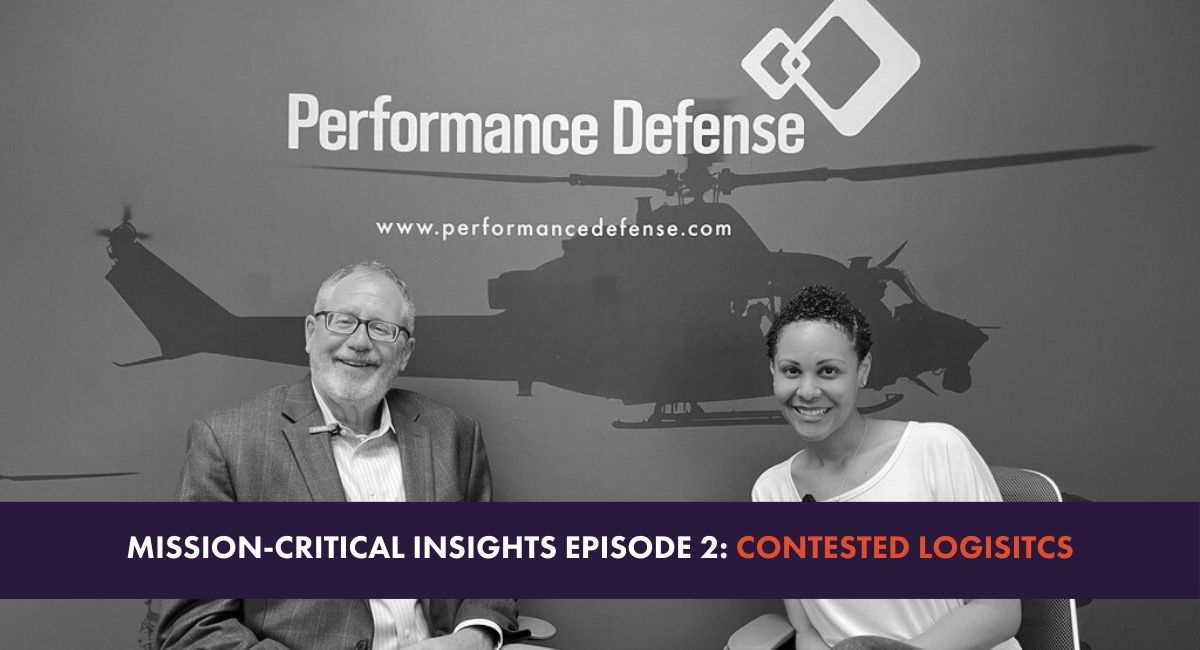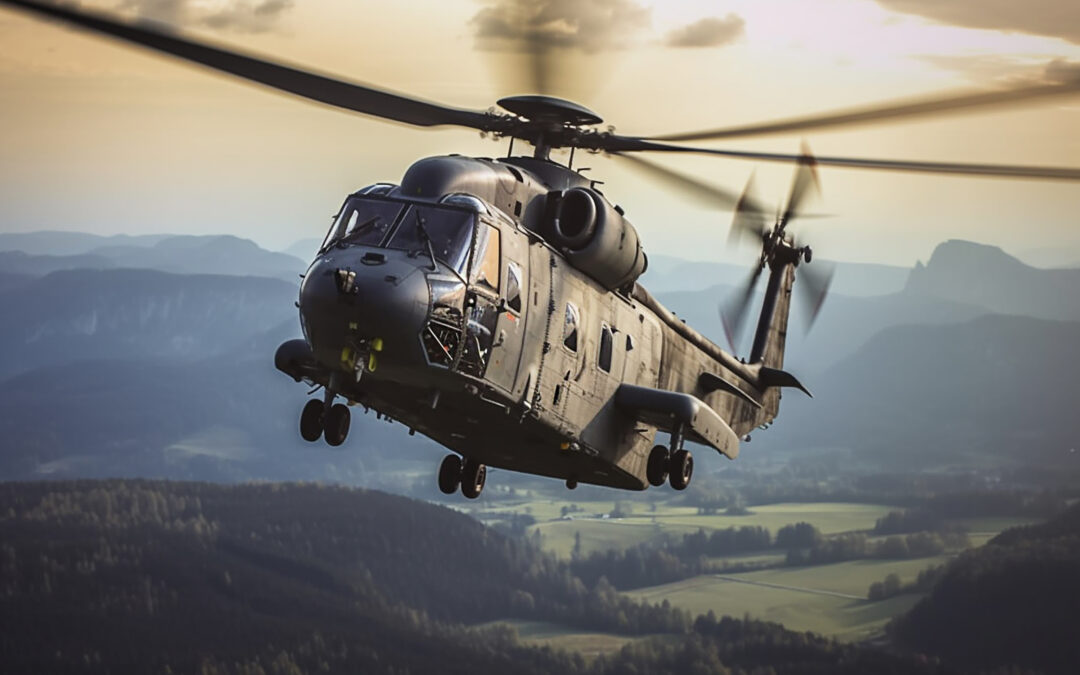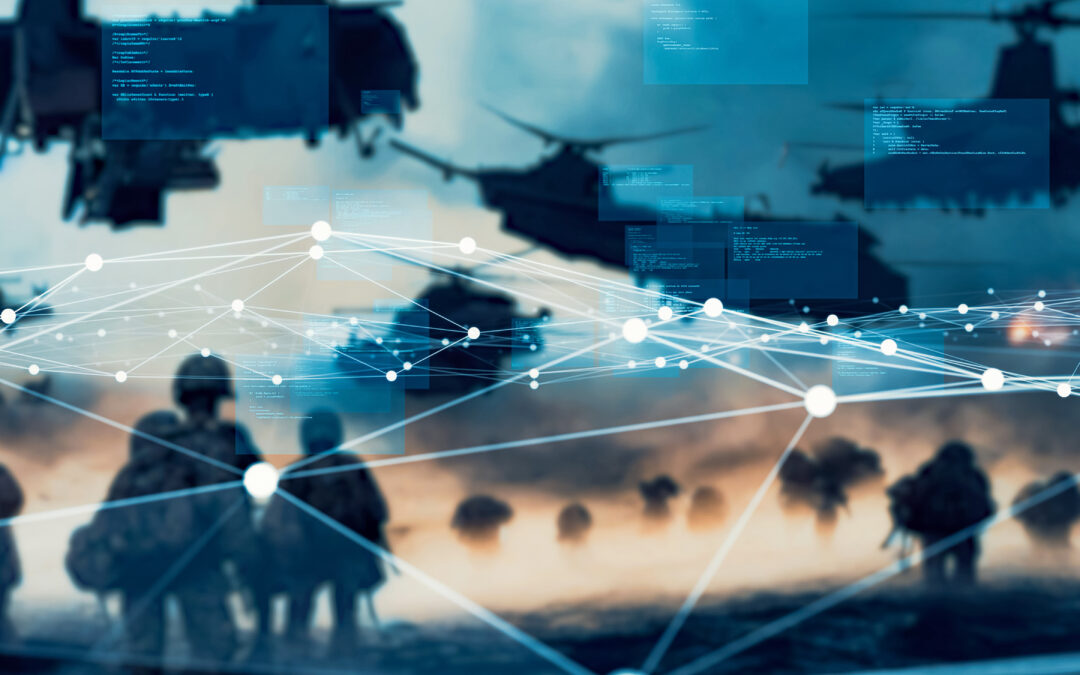The following interview dialogue is from episode two of Mission-Critical Insights between former DoD Chief Data Officer, Terry Busch, and our host, Kanika Henry.
KANIKA: Hello everyone, I’m Kanika Henry and welcome back to the Mission-Critical Insights Webcast Series where it is our mission to bring you the latest defense trends and provide relevant discussion with trusted subject matter experts. On today’s episode we are talking all things contested logistics and are joined by our subject matter expert of the day, Mr. Terry Busch, former Chief Data Officer of the Defense Intelligence Agency, welcome Terry.
TERRY: Thank you, thank you for having me today.
KANIKA: Of course, so Terry why don’t you go ahead and just tell us about yourself.
TERRY: Sure, absolutely. For the past 25 years, my job supporting the United States military as an intelligence officer has been to collect information through data and then share information for the military so they could be advised of what’s going on in the world, and we can get them critical information no matter where they may be around the globe.
KANIKA: Well it’s very nice to meet you Terry. Now given your impressive background in working for the Defense Intelligence Agency, particularly in the data sector, I imagine you’re very familiar with the term “contested logistics.” So before we dive deeper into the current challenges and gaps surrounding this topic, what–or can you explain I should say–“contested logistics” and how it encompasses your field of work.
TERRY: Sure, absolutely. One thing we don’t think about often in terms of military and moving around the globe is how hard it is. It’s not just moving the airplanes with the tanks, it’s the people, the equipment, the clothing, the fuel, the water, all that encompasses a field we call logistics, right? And for 80 years now we’ve had no problems. We’ve had freedom to move around the world as we see fit, right? Our sea lanes have been open and air travel has been open, but increasingly more recently, we have concerns. Changes in cyber security, changes in posture of different countries around the world, and a loss of supply chain during COVID all put some of our logistics at risk, right? They can be contested. They can be challenged. We don’t have the freedom of movement we once thought we had and we certainly don’t have the confidence in it that we once had.
KANIKA: Right, that was a very informative explanation. So for our audience here today, Terry what are your thoughts in regards to some of the AI/ML applications? And maybe you can shine some light on a few real world examples of where you’ve seen our operation excel and with contested logistics, or maybe some gaps in where we should be improving?
TERRY: Sure absolutely. One area, and most people will be familiar with this, is transportation logistics. If you use Google Maps or Waze, and you see the red lines of the traffic up ahead in the traffic reports, that’s just not crowdsourcing information in the other cars reporting in. Behind the scenes AI and ML is calculating how long your trip is going to be, right? It can even forecast sometimes where you’re going to go and in that aspect, AI/ML does very, very well when it has a lot of data that’s very repetitive. It can model, and train, and learn, and from a logistics standpoint, we know what’s going on. Imagine if no planes were taking off or landing in an airport, right? We know that airport’s shut down. How would we know that? Well with AI/ML today, we can look at people at the airport or, are they putting up social media posts? We can look at airplanes, are they taking off and landing? All that data is disseminated, right? We can look at all these things we call pattern of life and put them into AI/ML and get an understanding of what’s going on, right? And then look at that. If you use Google search and see if the restaurant is open, it tells you what time it’s busy, right?
KANIKA: Yeah.
TERRY: Logistics is the same thing. We can look and say “hey wait a second, this is patternistically the same, or different. So for logistics, it’s important. We may not want to arrive at that train stop at that busiest time of day, or at that point of that busy time day, so there’s some really good things going on with logistics in AI/ML. But there are gaps, and the primary gap you know, go back to when I say hey, when we have a lot of data we do well. It’s when we don’t have a lot of data, right, and our militaries around the world have to go to these obscure remote locations, right? We can’t rely on the data to just be there. So in those cases, we have gaps. We have to do more. We may have to derive signals from other sources, right? It may not just be a transponder coming off the airplane, or the GPS in the car or your phone. We may have to look at different kinds of signals to see what’s going on, especially when we’re looking at threats. Is that threat going to come in as a cyber attack? Is that threat going to come in as someone who shouldn’t be there showing up at the airport? Is that threat going to come in as just some sort of container or anonymous pieces of equipment that just somehow arrived?
So we think about that, the AI/ML has a long way to go because it has to look at all of those things and say this thing is not like the other. One, the pattern has changed, something is wrong, and then initially before it can say “hey you know, go get that box over there and bring it to me,” it has to train for a long time, right? Humans have to assist in this process, right? But for contested logistics when you think about all of those variables that go into what we’re doing, right, think about all those different signals that we may have to go out there and get to say “hey this thing that we really, really need, this crane, this port, this airfield may be at risk and it may be something that is innocuous or maybe something that doesn’t look like much of anything that gives us that early tip. We call it tipping and killing the early signal that something may be at risk, right? That is really where AI/ML has the most potential for growth in contested logistics.
KANIKA: Okay, wow! That was a lot of great information. So it sounds like there are clearly some gaps and challenges surrounding the current process of aggregating and networking all that important data to make the best possible decisions. As someone who has witnessed these issues firsthand and continues to discuss these issues with other industry leaders, what innovative solutions or technologies do you suggest that we invest in to help bridge those gaps? And is there anything that you’re currently working on specifically to aid in that process?
TERRY: Sure absolutely. Yeah first, let me start with when we can run AI in a cloud here at home, we can do tremendous things. But when we’re talking about our military, that story changes. Our military works in a remote and austere environments. They don’t have the ability to take that gear with them. Clouds are huge, they’re in warehouses, right? We barely can get anything else crammed onto their vehicle. There’s no room. So we have to look for our opportunities out there, and there’s great opportunities for innovation and solutions out there. The other reason that I really like that space, we call it “the Edge” and that’s where the military is out in this in these environments, disconnected sometimes from the rest of the world, or the “hyper Edge” where they don’t even have their trucks or their generators anymore, right? they’re literally in the field, is that we can get equipment there, we can do things there. And one of the great innovations and opportunities is first, is our ability to sense, right? We now have technology with our soldiers that can collect that information, they can see a cyber attack, they can see an adversary’s radio or communications that can pick up something on a sensor or a camera or UAV, right? That can detect some anomalous behavior that just came into inside their area of detection. And here’s where it gets cool.
A lot of that is coming back to a single device–The EDGE 5G-X router is one of those devices, right? We could start to just say, it’s a router that allows our military to communicate at 5G, that’s great, yeah, we’ve always had trouble communicating, so now we have 5G technology in the field. But now, I can collect all those things which may be threats to our logistics, right? That may contest our logistics, get them on the fly, and here’s where it gets cool–and then do something about it! I don’t have to go back to the cloud. Right there where I’m at, I can process that information, and say hey something’s changed, I’m an alert, I’m going to signal you, right? So the innovation space we call AI, of the small we think of as big nothing. Think of it running inside of chips somewhere on that router most of the time, the router is just passing information through, but it’s also listening and it’s going to listen to tech, right? Give us an opportunity to do something about it and change the status of that airfield, that port, or say we have a cyber attack that may affect that crane which we need, load everything to go overseas, right? So it’s important that we leverage Edge technology and hyper Edge technology that we have out there.
KANIKA: Well that sounds all very, very exciting, and really an all-around promising effort and seeing improved data operations where they are absolutely most critical. So thank you again for sharing that Terry, and thank you again for being here. Is there anything that you want to share with our audience today before we conclude?
TERRY: Yes. It’s really important to understand we’re just getting started in this area of contested logistics. Things have to come together first, we need to foster a spirit of cooperation and participation across multitudes of communities, the military, that’s intelligence operations, planning logistics, it’s technology corporations, it’s the resilient communications community, like with the EDGE 5G-X router, and it’s the big data companies, it’s the AI companies, all of us have to foster the spirit of collaboration to make this work. And the analogy I use is your airline app doesn’t talk to Waze, Waze doesn’t talk to your weather app, your weather app doesn’t talk to your planner, right? And for contested logistics, we need every app conceivable to come together, that data to share, to understand what’s happening in the world and predict these events that are going to challenge us in the future. That’s why we need a broader community effort to make all of this work.
KANIKA: Sounds good. Thank you so much Terry again. That’s good information, that’s great information, well that concludes our second episode of the Mission-Critical Insights and we’ll see you all next time when we discuss the latest defense trends and topics with our trusted subject matter experts. So thank you guys all again for tuning in.
More About Mission-Critical Insights
Mission-Critical Insights is a webcast series where we update you on the latest defense trends and provide relevant discussion with trusted subject matter experts on a variety of defense topics. This webcast series is brought to you by Performance Defense, a trusted provider of engineering solutions and services for mission-critical industries, specializing in full-lifecycle hardware and software development.
To watch this episode and others in this series, please visit the Performance Defense YouTube channel.





